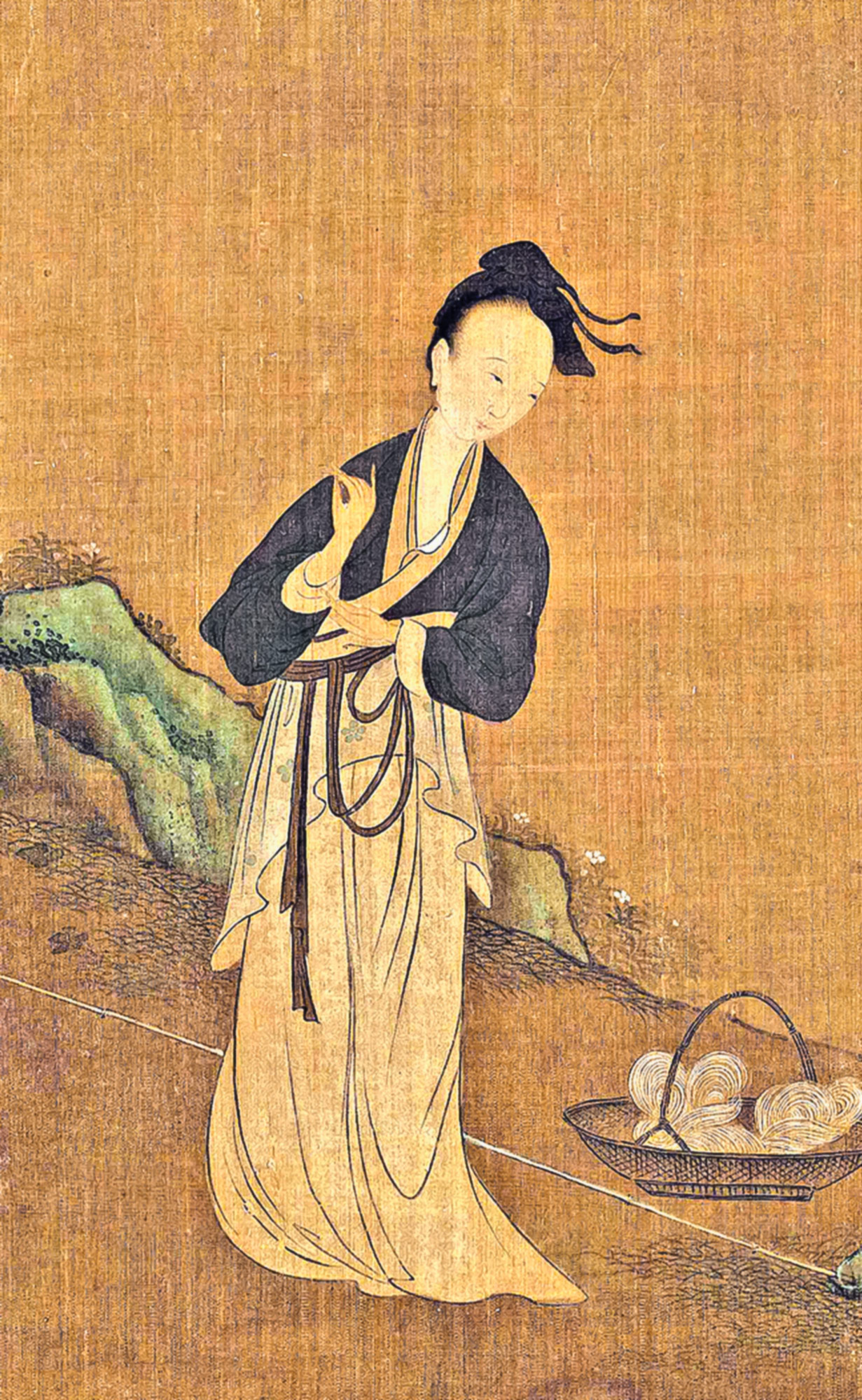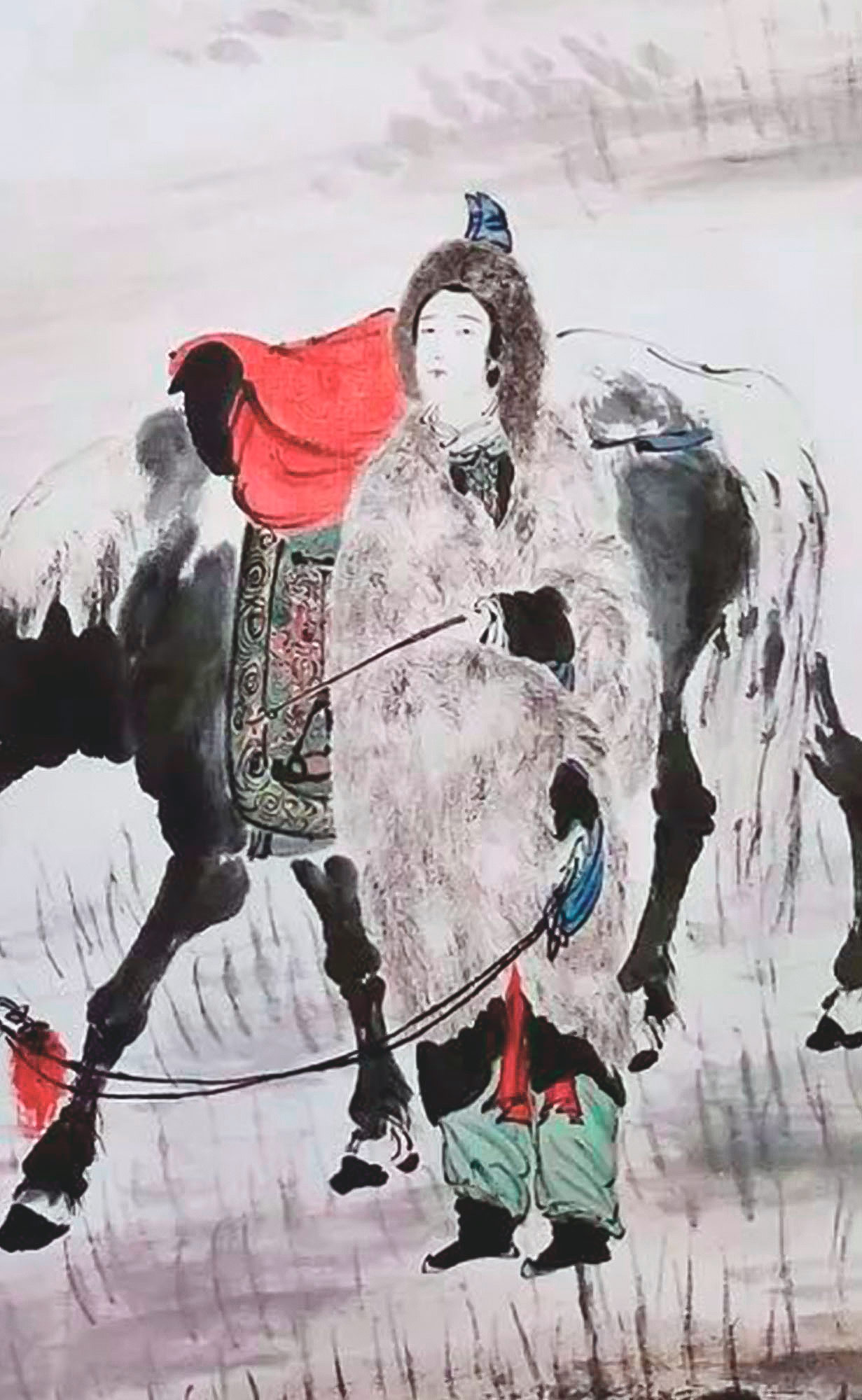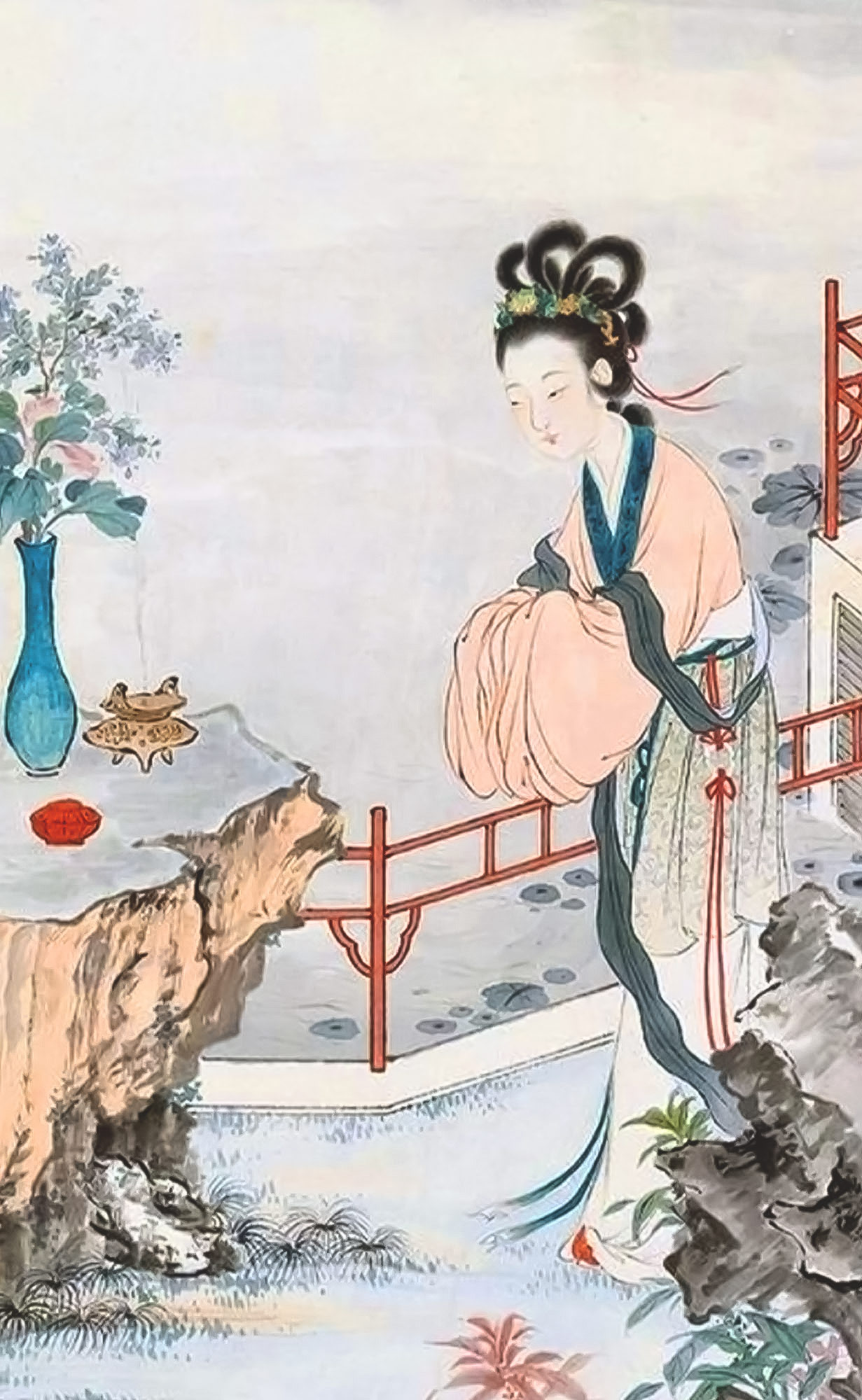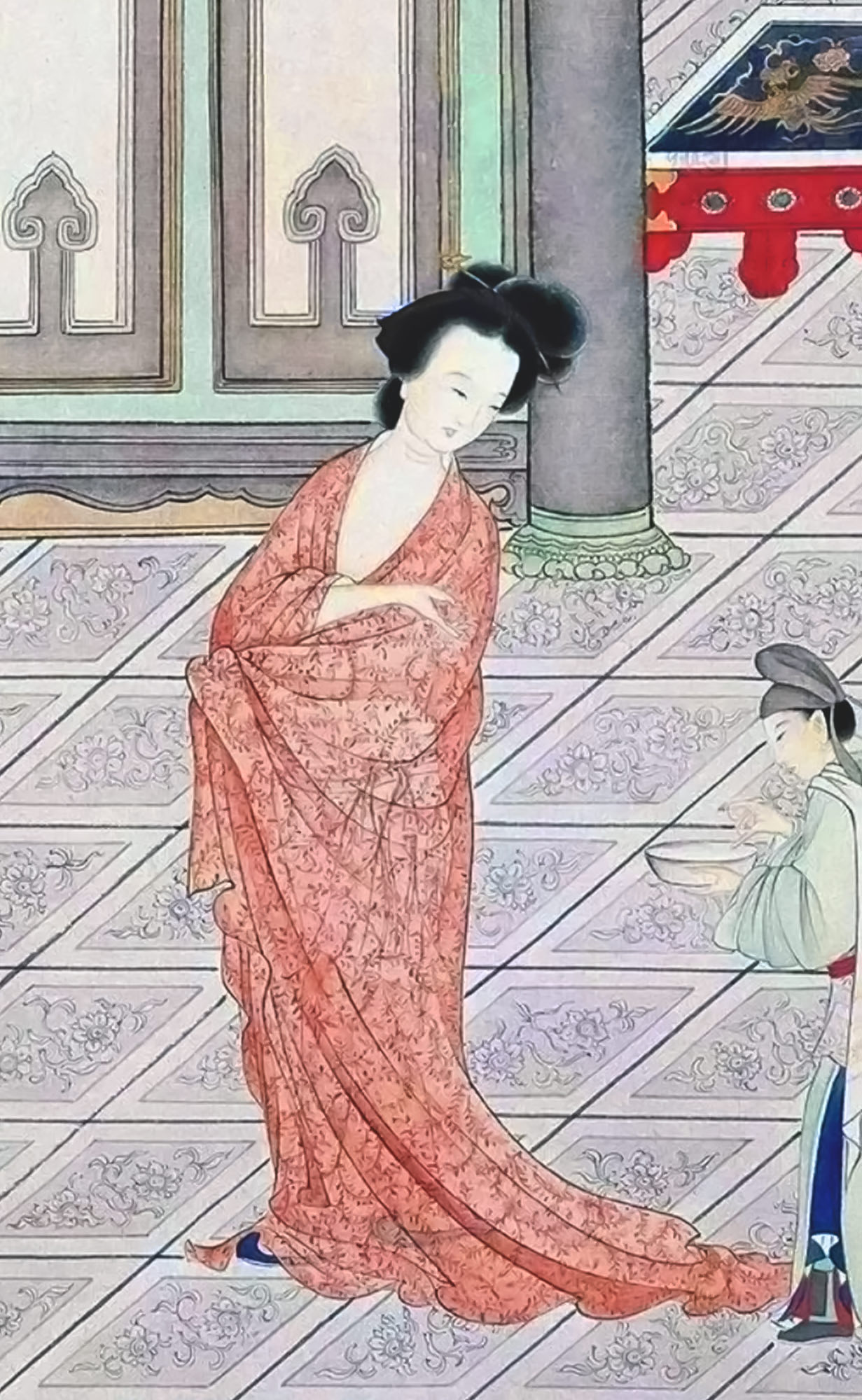The Four Beauties

If you’ve ever strolled through the aisles of a Chinese supermarket, you may have come across ornately crafted tin boxes with four Chinese women on the lid. These are the “Four Beauties” of Chinese history. After five thousand years of history, what makes these four ladies so special?
There’s a Chinese idiom that a lady is so beautiful she “makes fish sink and birds drop, outshining the moon and shaming flowers” (沈魚落雁,閉月羞花, chén yú luò yàn, bì yuè xiū huā). This saying was inspired by these women:
When Xi Shi looked out over a pond, the fish were so dazzled that they sank back into the water. Wang Zhaojun was so gorgeous that when birds saw her, they fell out of the sky. In front of Yang Guifei, flowers were too embarrassed to show their faces. And Diao Chan’s beauty eclipsed the moon.
While their incomparable looks were enough to set them apart from others, what really established their reputation was the important roles they played in Chinese history. Let’s introduce them in chronological order.
1. Xi Shi
The first beauty was Xi Shi, who lived around the fifth century B.C.E. This was a turbulent time in Chinese history, with the empire divided and multiple kingdoms at war. King Fuchai of the state of Wu had just conquered the state of Yue, taking its king, Goujian, captive. In order to defeat Fuchai and regain independence, the deposed king and his advisors hatched a plot to soften and distract Fuchai. As their secret weapon, they chose Xi Shi.
Originally from a small village, Xi Shi was selected to enter the imperial court, where Goujian and his advisers trained her. For three years, she learned etiquette, singing, and dancing. Once she was ready, she was introduced to Fuchai, taking on the role as the king’s favorite lady.
With someone as beautiful as Xi Shi distracting the king, Goujian seized this opportunity. After 20 long years of waiting, suffering, and humiliating himself time and again, the moment was right for Goujian to strike. He defeated Fuchai and regained independence for the state of Yue.
And what became of Xi Shi? It’s a bit of a mystery. Some say she was torn between real love for Fuchai and loyalty to her homeland, and so killed herself as a way of ending her mission. Others say she ran away with Goujian’s right-hand man Fan Li.
No matter how she spent her final years, for over two millennia since she has been remembered for her sacrifice, and for embodying the ideals of loyalty, courage, and selflessness.
2. Wang Zhaojun
Fast-forward some four centuries and we get to Wang Zhaojun, born around 50 B.C.E., during the Western Han Dynasty. She grew up in an aristocratic family and at a young age was already well-versed in the classics and could mesmerize listeners with her playing of the pipa. Alongside her talents, she grew up to be exceptionally beautiful, and so it was no surprise when she was chosen to enter the inner palace. As part of the harem, she would now have the opportunity to become one of the emperor’s concubines.
When selecting a new concubine, the emperor would consult the portraits of the ladies in his harem. At the time, however, these portraits were being created by greedy painters who didn’t mind embellishing a candidate’s painting if she slipped him a handsome gratuity.
Zhaojun refused to bribe the painters, leading them to draw a hideous painting of her. Although she possessed sublime beauty and brilliant talents, she was passed over and never presented to the emperor. She could only admire him from afar, and wait.
The emperor, meanwhile, was struggling to maintain a fragile peace with the powerful nomadic tribes to the north. In 33 B.C.E., their chieftain, Huhanye, visited the Han Dynasty capital. In return for his tributary offerings, the emperor gifted him generously. What the chieftain really wanted, though, was the hand of a Han princess—he wanted to become an imperial son-in-law. On the one hand, the emperor was loath to part with his precious daughter, but on the other, he wanted to please the formidable chieftain and strengthen their bond.
It is then that one of the emperor’s loyal advisors proposes a plan. Why not, he says, disguise another palace maiden to take your daughter’s place? The emperor agrees, and the maiden selected is no other than Zhaojun, who at that point was unknown to the emperor and of no consequence to him.
The advisor approaches Zhaojun and asks her: Are you willing, for the peace of the empire, to be married off to the chieftain and go live in the northern wilderness among the nomads? At first, she refuses the proposition, thinking of her wonderful life in the Han palace. She could also stay close to the emperor and one day, who knows… By comparison, life in the northern regions would be cold and harsh on the unforgiving steppes. To eke out a grim existence in a makeshift yurt, tending to livestock day in and day out, in a foreign land, speaking a foreign tongue, with people and customs she did not know, to never see her family again…
Yet, Zhaojun thought about all the people her decision would affect. She understood that a successful marriage alliance would mean to the Han Dynasty—an end to war and suffering and death on the battlefield. She sighed, steadied her heart, and agreed.
As she was preparing to leave, the emperor came to check on her. He was shocked! What stood before him was not an ordinary palace maiden, but a woman with otherworldly beauty that made his heart leap. He was instantly in love.
The emperor wanted Zhaojun for himself, but how could he break his promise to the chieftain? With a heavy heart, the emperor buried any thought of keeping her. The chieftain, on the other hand, was delighted that the emperor had granted him the most heavenly woman he had ever seen. Early next morning, the nomads left the palace with their new queen. Zhaojun turned her head one last time to look at the emperor and the receding palace, an image that has been captured in artwork ever since.
After arriving on the steppes, Zhaojun adapted to the nomad’s lifestyle and became their endeared queen. She never forgot her homeland, though, and always urged the chieftain and other leaders to maintain peaceful relations. She remained with them for the rest of her life, even after her husband’s death, and thanks to her there were no wars between the nomads and the Han for a remarkable sixty years.
Her story was vividly depicted in Shen Yun’s 2022 mini dance drama The Story of Lady Wang Zhaojun.
3. Diao Chan
From the Western Han Dynasty, we skip ahead to the waning days of the Eastern Han Dynasty, in the second century C.E., where we meet our third beauty—Diao Chan. She was part of an elaborate beauty trap to oust a brutal tyrant, a story captured in the classic novel Romance of the Three Kingdoms.
The story begins when the emperor passes away and his child is put on the throne. A tyrannical warlord named Dong Zhuo uses the weakness of the young emperor to seize control of the royal court, harboring aspirations to become emperor himself. Dong Zhuo is brutal and bloodthirsty, executing any official who dares stand in his way.
Dong Zhuo is aided and protected by his adopted son—a tall, dashing, and fearsome warrior named Lü Bu.
With the empire on the verge of collapse, one loyal minister named Wang Yun is deeply troubled as his mind searches for a solution. His own adopted daughter, the gorgeous Diao Chan, senses his distress and asks him if there’s anything she can do to help him.
Wang Yun is suddenly inspired. He comes up with a plan—but it’s tricky and dangerous, especially for his beautiful and innocent daughter Diao Chan.
The minister creates a conflict between the tyrant and his adopted son by offering Diao Chan’s hand in marriage first to Lü Bu, and then separately to Dong Zhuo. Diao Chan then comes running back to Lü Bu in distress, saying she is his and yet Dong Zhuo is going to force her to marry him instead!
Lü Bu is infuriated at Dong Zhuo. Dong Zhuo thinks Lü Bu is trying to steal his wife. In a rage, Lü Bu kills Dong Zhuo and flees the palace. Mission accomplished.
Diao Chan’s actions are a true representation of “yi” (義), which is term that combines the values of loyalty, righteousness, and justice, and is the main theme of the Romance of the Three Kingdoms (it’s even included in the novel’s Chinese name—san guo yan yi).
Diao Chan’s story was captured in Shen Yun’s 2020 dance drama The Beauty Trap as well as Shen Yun’s original opera The Stratagem.
4. Yang Guifei
Last but not least is the tale of Yang Guifei, a love story from the eighth century, during the height of the great Tang Dynasty.
Emperor Tang Xuanzong is enamored by her beauty and she soon becomes his favorite concubine. The emperor showers Lady Yang with imperial titles and precious jewels, filling her life with splendor. Before long, the emperor spends all his days lounging around with Lady Yang, indulging himself with the finer things in life.
But as they dine and dance, trouble is brewing outside the palace. Leaders of military factions are gaining power and planning a rebellion, while corrupt officials have been bribing Lady Yang’s family members for their own personal gain.
The emperor, however, continues neglecting state affairs for affairs of the heart. His advisors protest and admonish time and again, but he ignores them. When the rebels finally break in to the palace, the emperor and his company are forced to flee.
Out of harm’s reach, the emperor’s advisors and guards refuse to carry on. They claim that Lady Yang is responsible for distracting the emperor, causing him to forsake his duties, and bringing the Tang Dynasty to its knees. They will not defend the Tang Dynasty unless Lady Yang is punished—by taking her own life. Seeing no way to resolve the situation, the emperor, heartbroken, consents.
This fourth beauty’s story was portrayed in Shen Yun’s 2023 dance drama The Tang Emperor and Lady Yang.
* * *
So next time you’re in a Chinese supermarket, see if you can spot and identify the Four Beauties: Is that Xi Shi gathering flowers by the water? Zhaojun with her pipa and red cloak? Lady Yang in her elaborate headdress and golden Tang Dynasty garb? And Diao Chan with her moist eyes, holding an incense stick?
To grasp how remarkable they were, you might ponder this—which of today’s people—male or female—will be remembered in two thousand years?




